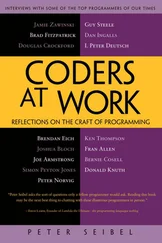Peter Siebel - Practical Common Lisp
Здесь есть возможность читать онлайн «Peter Siebel - Practical Common Lisp» весь текст электронной книги совершенно бесплатно (целиком полную версию без сокращений). В некоторых случаях можно слушать аудио, скачать через торрент в формате fb2 и присутствует краткое содержание. Год выпуска: 2005, ISBN: 2005, Издательство: Apress, Жанр: Программирование, на английском языке. Описание произведения, (предисловие) а так же отзывы посетителей доступны на портале библиотеки ЛибКат.
- Название:Practical Common Lisp
- Автор:
- Издательство:Apress
- Жанр:
- Год:2005
- ISBN:1-59059-239-5
- Рейтинг книги:4 / 5. Голосов: 1
-
Избранное:Добавить в избранное
- Отзывы:
-
Ваша оценка:
- 80
- 1
- 2
- 3
- 4
- 5
Practical Common Lisp: краткое содержание, описание и аннотация
Предлагаем к чтению аннотацию, описание, краткое содержание или предисловие (зависит от того, что написал сам автор книги «Practical Common Lisp»). Если вы не нашли необходимую информацию о книге — напишите в комментариях, мы постараемся отыскать её.
Practical Common Lisp — читать онлайн бесплатно полную книгу (весь текст) целиком
Ниже представлен текст книги, разбитый по страницам. Система сохранения места последней прочитанной страницы, позволяет с удобством читать онлайн бесплатно книгу «Practical Common Lisp», без необходимости каждый раз заново искать на чём Вы остановились. Поставьте закладку, и сможете в любой момент перейти на страницу, на которой закончили чтение.
Интервал:
Закладка:
If you want to get in touch with other Lispers, comp.lang.lispon Usenet and the #lispIRC channel or the Freenode network ( http://www.freenode.net) are two of the main online hang- outs. There are also a number of Lisp-related blogs, most of which are aggregated on Planet Lisp at http://planet.lisp.org/.
And keep your eyes peeled in all those forums for announcements of local Lisp users get-togethers in your area—in the past few years, Lispnik gatherings have popped up in cities around the world, from New York to Oakland, from Cologne to Munich, and from Geneva to Helsinki.
If you want to stick to books, here are a few suggestions. For a nice thick reference book to stick on your desk, grab The ANSI Common Lisp Reference Book edited by David Margolies (Apress, 2005). [334] Another classic reference is Common Lisp: The Language by Guy Steele (Digital Press, 1984 and 1990). The first edition, a.k.a. CLtL1, was the de facto standard for the language for a number of years. While waiting for the official ANSI standard to be finished, Guy Steele—who was on the ANSI committee—decided to release a second edition to bridge the gap between CLtL1 and the eventual standard. The second edition, now known as CLtL2, is essentially a snapshot of the work of the standardization committee taken at a particular moment in time near to, but not quite at, the end of the standardization process. Consequently, CLtL2 differs from the standard in ways that make it not a very good day-to-day reference. It is, however, a useful historical document, particularly because it includes documentation of some features that were dropped from the standard before it was finished as well as commentary that isn't part of the standard about why certain features are the way they are.
For more on Common Lisp's object system, you can start with Object-Oriented Programming in Common Lisp: A Programmer's Guide to CLOS by Sonya E. Keene (Addison-Wesley, 1989). Then if you really want to become an object wizard or just to stretch your mind in interesting ways, read The Art of the Metaobject Protocol by Gregor Kiczales, Jim des Riviéres, and Daniel G. Bobrow (MIT Press, 1991). This book, also known as AMOP, is both an explanation of what a metaobject protocol is and why you want one and the de facto standard for the metaobject protocol supported by many Common Lisp implementations.
Two books that cover general Common Lisp technique are Paradigms of Artificial Intelligence Programming: Case Studies in Common Lisp by Peter Norvig (Morgan Kaufmann, 1992) and On Lisp: Advanced Techniques for Common Lisp by Paul Graham (Prentice Hall, 1994). The former provides a solid introduction to artificial intelligence techniques while teaching quite a bit about how to write good Common Lisp code, and the latter is especially good in its treatment of macros.
If you're the kind of person who likes to know how things work down to the bits, Lisp in Small Pieces by Christian Queinnec (Cambridge University Press, 1996) provides a nice blend of programming language theory and practical Lisp implementation techniques. While it's primarily focused on Scheme rather than Common Lisp, the same principles apply.
For folks who want a little more theoretical look at things—or who just want to know what it's like to be a freshman comp sci student at M.I.T.— Structure and Interpretation of Computer Programs , Second Edition, by Harold Abelson, Gerald Jay Sussman, and Julie Sussman (M.I.T. Press, 1996) is a classic computer science text that uses Scheme to teach important programming c oncepts. Any programmer can learn a lot from this book—just remember that there are important differences between Scheme and Common Lisp.
Once you've wrapped your mind around Lisp, you may want to place it in a bit of context. Since no one can claim to really understand object orientation who doesn't know something about Smalltalk, you might want to start with Smalltalk-80: The Language by Adele Goldberg and David Robson (Addison Wesley, 1989), the standard introduction to the core of Smalltalk. After that, Smalltalk Best Practice Patterns by Kent Beck (Prentice Hall, 1997) is full of good advice aimed at Smalltalkers, much of which is applicable to any object-oriented language.
And at the other end of the spectrum, Object-Oriented Software Construction by Bertrand Meyer (Prentice Hall, 1997) is an excellent exposition of the static language mind-set from the inventor of Eiffel, an oft-overlooked descendant of Simula and Algol. It contains much food for thought, even for programmers working with dynamic languages such as Common Lisp. In particular, Meyer's ideas about Design By Contract can shed a lot of light on how one ought to use Common Lisp's condition system.
Though not about computers per se, The Wisdom of Crowds: Why the Many Are Smarter Than the Few and How Collective Wisdom Shapes Business, Economies, Societies, and Nations by James Surowiecki (Doubleday, 2004) contains an excellent answer to the question, "If Lisp's so great how come everybody isn't using it?" See the section on "Plank-Road Fever" starting on page 53.
And finally, for some fun, and to learn about the influence Lisp and Lispers have had on hacker culture, dip into (or read from cover to cover) The New Hacker's Dictionary , Third Edition, compiled by Eric S. Raymond (MIT Press, 1996) and based on the original The Hacker's Dictionary edited by Guy Steele (Harper & Row, 1983).
But don't let all these suggestions interfere with your programming—the only way to really learn a language is to use it. If you've made it this far, you're certainly ready to do that. Happy hacking!
Примечания
1
Perl is also worth learning as "the duct tape of the Internet."
2
Unfortunately, there's little actual research on the productivity of different languages. One report that shows Lisp coming out well compared to C++ and Java in the combination of programmer and program efficiency is discussed at http://www.norvig.com/java-lisp.html.
3
Psychologists have identified a state of mind called flow in which we're capable of incredible concentration and productivity. The importance of flow to programming has been recognized for nearly two decades since it was discussed in the classic book about human factors in programming Peopleware: Productive Projects and Teams by Tom DeMarco and Timothy Lister (Dorset House, 1987). The two key facts about flow are that it takes around 15 minutes to get into a state of flow and that even brief interruptions can break you right out of it, requiring another 15-minute immersion to reenter. DeMarco and Lister, like most subsequent authors, concerned themselves mostly with flow-destroying interruptions such as ringing telephones and inopportune visits from the boss. Less frequently considered but probably just as important to programmers are the interruptions caused by our tools. Languages that require, for instance, a lengthy compilation before you can try your latest code can be just as inimical to flow as a noisy phone or a nosy boss. So, one way to look at Lisp is as a language designed to keep you in a state of flow.
4
This point is bound to be somewhat controversial, at least with some folks. Static versus dynamic typing is one of the classic religious wars in programming. If you're coming from C++ and Java (or from statically typed functional languages such as Haskel and ML) and refuse to consider living without static type checks, you might as well put this book down now. However, before you do, you might first want to check out what self-described "statically typed bigot" Robert Martin (author of Designing Object Oriented C++ Applications Using the Booch Method [Prentice Hall, 1995]) and C++ and Java author Bruce Eckel (author of Thinking in C++ [Prentice Hall, 1995] and Thinking in Java [Prentice Hall, 1998]) have had to say about dynamic typing on their weblogs ( http://www.artima.com/weblogs/viewpost.jsp?thread=4639and http://www.mindview.net/ WebLog/log-0025). On the other hand, folks coming from Smalltalk, Python, Perl, or Ruby should feel right at home with this aspect of Common Lisp.
Интервал:
Закладка:
Похожие книги на «Practical Common Lisp»
Представляем Вашему вниманию похожие книги на «Practical Common Lisp» списком для выбора. Мы отобрали схожую по названию и смыслу литературу в надежде предоставить читателям больше вариантов отыскать новые, интересные, ещё непрочитанные произведения.
Обсуждение, отзывы о книге «Practical Common Lisp» и просто собственные мнения читателей. Оставьте ваши комментарии, напишите, что Вы думаете о произведении, его смысле или главных героях. Укажите что конкретно понравилось, а что нет, и почему Вы так считаете.








